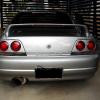Fuel Consumption Tips
Announcements
-
Similar Content
-
Latest Posts
-
Have a look at JS Performance Garage, just did a bit of work on a 32 GTR.
-
What to even say/ask? Should I mention to Shannons I'm shopping around or is that cliche.
-
By Low/slow370GT · Posted
**SOLD** Sorry all, forgot to close this off. -
Hey there rob, just looking at the car. I’m quite interested in buying if your still selling
-
He's already pulled the motor, and I believe sent it to the builder. TurboTaipan has a cool build thread in the projects area you can follow on for more updates too
-







Recommended Posts
Create an account or sign in to comment
You need to be a member in order to leave a comment
Create an account
Sign up for a new account in our community. It's easy!
Register a new accountSign in
Already have an account? Sign in here.
Sign In Now